What Will a Hispanic United States Look Like? Part 1
Benjamin Villaroel4,329 words
Part 1 of 3 (Part 2 here)
“The world-wide expansion of the white race during the four centuries between 1500 and 1900 is the most prodigious phenomenon in all recorded history.” — Lothrop Stoddard[1]
“Beyond the excesses of many of those valiant conquistadores who sought gold and fame is the legacy of a civilizing project whose largesse is unmatched throughout history. Because behind the language, the schools and universities, the churches, the ‘New World Baroque’ and the innumerable and enormous cultural and material artifacts, was the evangelizing impulse that not only brought Christian civilization, but also birthed the new mestizo race.” — Jaime Guzmán[2]
The Twenty-first Century
The demographic projections have been quite clear about this for over two decades now: In the United States, non-Hispanic whites, historically between 80 and 90 percent of the population, will sink below the 50 percent mark before the end of the century. The black population is expected to rise slightly. The Asian population is expected to rise dramatically, but due to their current low numbers, will still not constitute a very large demographic group. Hispanics, meanwhile, will be more than one in four Americans.
(Both charts are from Brookings, here)
While this certainly means a browner, more Hispanic United States, the extent of the racial impact of these trends is not always crystal clear. This is for the simple reason that “Hispanic,” strictly speaking, is not actually a racial term, but a linguistic one. The Hispanics of Latin America vary quite widely both in genetic makeup and in how they identify socially when it comes to race.
This is easily demonstrated with current United States census data. As of July 2017, the non-Hispanic white population was put at 60.7 percent of the population; Hispanics were 18.1 percent. However, when “Hispanic” as a racial category was eliminated, forcing Latin Americans and those of Latin American ancestry to identify with a less ambiguous racial type, the white population of the United States is placed at 76.6 percent. That is to say, when Hispanics are asked to choose between “white,” “black,” “American Indian,” “Asian,” “Native Hawaiian,” and “two or more races,” the vast majority choose “white.”
While not many Hispanics are as white as America’s historic white majority, most of them do have white blood, and in fact, many of them are half or more white. What I intend to do over the course of this essay is to survey the racial makeup of the Latin American nations that make up the largest share of America’s growing Hispanic population, and from there sketch out what the racial balance of America will be – and from there, estimate how the parameters of whiteness may change.
Here is a chart showing the share of America’s Hispanic population by national origin. The chart is cribbed from Wikipedia here, which sourced the numbers from 2017 US census data here.
We will examine the racial makeup of each of these countries in turn, but first we must look at some of colonial Spain’s caste and taxonomic labels for the wide variety of mixed-race people found in Latin America.
The three pure racial genotypes in the New World were:
- Black
- White
- Amerindian
In the US, two of the terms for the mixes between these three groups are fairly well known:
- Mulatto – half-black and half-white
- Mestizo – half-Amerindian and half-white
Mestizo:
Mulatto:
The third – half-black and half-Amerindian – is not so universal. In most of Latin America, the term was zambo, sometimes spelled zambaigo. (This word eventually made it to the US as “sambo,” generally used as a mild pejorative for blacks.) However, in Mexico, the word for this mix was lobo – Spanish for “wolf.” For simplicity’s sake, throughout this essay we will use the word zambo.
Zambo/Lobo:
There were the three terms for the gradations of whiteness between mestizo and white. The most commonly used was castizo: three-quarters white, one-quarter Amerindian.
Castizo:
Generally, if a castizo went on to have children with a white partner, their offspring – one-eighth Amerindian – were considered to be white:
However, there was at one time the label espomolo for those of seven-eighths white and one-eighth Amerindian ancestry. It is a useful word, and we will employ it throughout this essay.
Another label long forgotten by history is harnizo, for those of five-eighths Amerindian and three-eighths white ancestry; in other words, 62.5 percent white and 27.5 percent Amerindian.
While there was a plethora of other labels in colonial Spain for nearly every different genetic composition imaginable, what each label meant was not universal; the definitions varied with time and geography.[3] To avoid confusion, in this essay we will only use one more colonial label aside from the above: pardo, someone of mixed Amerindian, white, and black ancestry.
One final note to make is regarding people and peoples who are between 1 and 50 percent white, regardless of their other admixture. Outside of the US, that amount of white ancestry, though small, was considered consequential. Inside the US, it never has. American blacks, for instance, are generally between 20 and 25 percent white, but they are still considered to be black without qualifier. The American view of Latin Americans who are 20 to 25 percent white and otherwise Amerindian is implicitly the same: they are viewed as non-white Amerindians, without qualifier. While I do believe that America’s concept of whiteness will broaden in the coming century (more on this below), it is not likely that new terms will arise to describe people who are non-white, but with some white blood. For the purposes of this essay, I will refer to people between one-quarter and one-half white as “dark mestizos.” Amerindians with less than one-quarter of white admixture will simply be counted with pure Amerindians. A table for reference is below.
Most demographic breakdowns of Latin American nations do not use terms nearly this precise. Generally, “white” means 75 percent white (castizo) or more, while mestizo is used even more broadly, usually for people between 26 and 75 percent Amerindian. Below, we will examine the demographics for various nations as provided from an array of sources, and attempt to tease out more accurate estimates.
MEXICANS
Percent of American Hispanics: 62.3
Mexico, as the far-and-away biggest contributor to America’s Hispanic population, is worth looking at first. The CIA’s World Factbook breaks down race in Mexico this way:
- 62 percent mestizo
- 21 percent “predominantly Amerindian”
- 7 percent Amerindian
- 10 percent “other” – assumed to be largely white
Other sources largely agree with this ratio: World Atlas entirely, and Alan Wall – the VDARE contributor – dissenting only mildly. He lumps together the “mostly Amerindian” and “Amerindian” populations, putting them at 30 percent, with mestizos at 60 percent, whites at 9 percent, and 1 percent “other.”
Serious examinations of the average genetic makeup of Mexicans are hard to do, because Mexico is a shockingly diverse place, with over 65 different Amerindian groups inside its borders. Science Magazine, reporting on one study from 2014, observed that two Mexicans from different parts of the country are as genetically distinct as are Germans from Japanese. One genetic study that surveyed much of Latin America (referred to from here on as “IAELAP,” full citation below)[4] found that the average Mexican was 51-56 percent Amerindian, 40-45 percent white, and 4-5 percent black – an average other studies have found as well. In the northern third of Mexico, the average was both whiter and blacker, while in the south the average was considerably more Amerindian. In studies searching for the average genotype in Mexico City, the capital and most populous city of Mexico, five out of seven showed a range of 61-69 percent Amerindian, 30-37 percent white, and 2-5 percent black. Both of the “outlier” studies are interesting. One put the average at 64 percent Amerindian, 21 percent white, and 15 percent black. Another put the average as 57 percent white, 40 percent Amerindian, and 3 percent black. The whitest region, according to the studies compiled, was the northern desert state of Sonora: 62 percent white, 2 percent black, and 36 percent Amerindian. The most Amerindian region, on average, was the southern state of Guerrero: 81 percent Amerindian, 2.5 percent black, and 14.5 percent white. No region had an average of black admixture higher than 16 percent.
Map of Mexican states:
Map of Mexican states by Amerindian population:
The distribution of Amerindian ancestry in contemporary Mexico is a function of where the pre-Columbian Aztec and Mayan empires were. Although there were some Amerindian tribes elsewhere in Mexico, they were never nearly as numerous.
Map of Mayan and Aztec Empires:
One extremely important point that needs to be made about genetic averages of Latin American states is that they must control for region. Most nations in Latin America vary racially by region to an enormous degree. This is why averages are often taken from the largest city of a country, where the population is large enough that there is enough variety in samples to create more accurate and meaningful averages.
Hence, genetic averages must always be taken with a grain of salt, and thought must be given to geographic and sociological realities. In the case of Mexico, I am most dubious of the averages taken from the southern regions, where there are essentially two population groups: Amerindians and mestizos. If an area is half pure Amerindian and half mestizo, with an average of 50 percent white and 50 percent Amerindian admixture, the supposed “average” of the area is claimed to be 75 percent Amerindian and 25 percent white – even though this is not the case in any meaningful way, just as it would not be meaningful to claim the average American is 13 percent black just because 13 percent of the country is black. By taking the demographic data into consideration, it becomes unlikely that the average citizen of the aforementioned state of Guerrero is 81 percent Amerindian, 2.5 percent black, and 14.5 percent white. It is much more likely that the vast majority of the state is pure, or nearly pure, Amerindian, while another third or quarter is mestizo and dark mestizo. This is almost certainly the case for the entirety of the south. The center of the country, including Mexico City, and most especially the north, are much more mixed, with fewer concentrations of pure Amerindians, making their averages much more meaningful – though still certainly not representative of every single resident.
This is all quite a bit of data to take in, to be sure. A number of things are worth explaining at greater length.
Like the French and the British, both the Portuguese and the Spanish imported black African slaves into the New World. In much of Latin America, these blacks were absorbed into the general populations, as was the case in Mexico. In certain other nations, a small black minority still exists – just like it does in the United States – and in still others, especially in the Caribbean, a bit of both happened: black genes were distributed across the general population, and a more distinct black minority exists to this day. In Mexico, there are very few people with apparent black ancestry, though there are some:
Many readers are likely surprised at the substantive amount of white ancestry in Mexico, particularly (though not exclusively) in the north, but it is so. Mexicans may not seem very white to Americans, but in the context of Latin America, they are whiter than average. Its northernmost population is majority harnizo – people of about 62.5 percent white ancestry.
Danny Trejo:
Of Mexico’s ~60 percent “mestizo” population, my estimate is that about a third of them are more along the lines of harnizos – almost entirely concentrated in the north.
Mestizos, more concentrated in the middle of Mexico, look more like:
Amerindians – whether “dark mestizo,” pure, or anything in between – look like:
A Maya woman and her baby:
Two Amerindian women in Chiapas, a largely Indian state in the south of Mexico:
A Mexican Amerindian:
Castizos (around 75 percent white), meanwhile, look nearly but not fully white by contemporary American standards.
Eva Longoria:
Her DNA test results came back as 70 percent white, 27 percent Asian/Amerindian, and 3 percent black.
Nick Fuentes
His DNA test results came back as 79 percent white, 21 percent Amerindian.
Espomolos (87.5 percent white) generally could “pass” for pure white, but once you know of their other admixture, it seems obvious. Actor Adrian Grenier is an example of an espolomo. According to his DNA test, he is 91.56 percent white and 8.44 percent Amerindian.
Adrian Grenier:
There are pure and nearly-whites in Mexico as well. Ironically, the anti-white media personality Jorge Ramos would be one example, with his blue eyes and blonde/white hair.
Jorge Ramos:
But he is far from the only one:
The white population of Mexico (~10 percent) – and the white population of most all of Latin America – is a mix of castizos, espomolos, and pure whites. The mestizo population of Mexico (~60) is one of the whitest mestizo populations in Central and South America. I would estimate that only about a third of them are truly mestizos, while another third is harnizo, and another third is dark mestizo – essentially Amerindians. With that in mind, the demographics of the country could be more accurately broken down as:
~10 percent white (75 percent white or more)
~20 percent harnizo (62.5 to 75 percent white)
~20 percent mestizo (50 to 62.5 percent white)
~20 percent dark mestizo (25 to 50 percent white)
~30 percent Amerindian (40 percent white or less)
The racial composition of America’s Mexican immigrants, then, has the potential to vary immensely – and it does. For a rough idea of what it is, we can look at which Mexican states the immigrants are coming from. The Migration Policy Center collected data on this question, covering the years 2004-2015, complete with an interactive map. Per this source, 40.1 percent of Mexican immigration to the US came from the states that either bordered the US, or bordered those states that did.[5] This is the good news. That 40.1 percent comes from the whitest region of Mexico – aside from the elite white neighborhoods in Mexico City. This 40 percent is likely half harnizo, and probably some castizo; in other words, less than half of it is mestizo. The bad news is that the rest of Mexican immigration – 59.9 percent of it – is from the rest of the country. Worse still is that the state with the second-highest share of Mexican immigrants is one of the least white ones: Chiappas, at 8.7 percent. Nearly all of these immigrants are Amerindians or dark mestizos. The state that most contributes Mexican immigrants – 11.1 percent of them – is Guanajuato, in the center. The IAELAP puts the genetic average of that state as 40 percent white, 1 percent black, and 59 percent Amerindian. Given that it has a reasonable share of pure Amerindians, I suspect the majority of these immigrants are mestizos, with significant numbers of dark mestizos and Amerindians as well. Overall, though, the north, center, and south of Mexico contribute to the Mexican immigrant population about evenly. That means that, as unlikely as it may seem, the demographics of Mexican immigration are likely similar to the demographics of Mexico itself. My “back of the envelope” racial breakdown of America’s Mexican immigrants is below. Remember, too, that the total of all the below numbers constitute a very significant portion of America’s Hispanic population: 62.3 percent.
~10 percent espomolo and white
~10 percent harnizo
~10 percent castizo
~20 percent Amerindian
~25 percent mestizo
~25 percent dark mestizo
PUERTO RICANS
Percent of American Hispanics: 9.5
Puerto Rico is second only to Mexico as a point of origin for America’s Hispanic population. But there are probably just as many misconceptions and misunderstandings about the racial makeup of the former as there are about the racial makeup of the latter. In the 2000 census, when Puerto Ricans were asked to identify as a race – excluding “Hispanic” – 80.5 percent chose “white,” while 8 percent chose “black,” and only 6.8 percent chose “some other race.” The CIA World Factbook, with World Atlas in agreement, largely buttresses this claim by breaking down Puerto Rican demographics as 75.8 percent white, 12.4 percent black, 8.5 percent “other,” and 3.3 percent “mixed.” The truth is much more complex.
On average, Puerto Ricans are 64 percent white, 21 percent black, and 15 percent Amerindian (specifically, the Taino people). While there are portions of the Puerto Rican population that are whiter and blacker, this average is likely accurate, as Puerto Ricans have a fairly universally acknowledged distinct look to them, easily separable not only from other Latin Americans, but other Caribbean peoples as well.[6]
Rosario Dawson:
The IAELAP examined genetic samples from different regions of the island and largely confirmed that the average is fairly universal.
Overall, the variation is not that great, aside from the eastern quarter, which is decidedly blacker and less white.
While many readers likely thought it inappropriate that so many Puerto Ricans identified as “white,” on average they are much more white than any other race. Even in the island’s blackest region, white genes still represent over 50 percent of the total. Puerto Rico, then, is one of the Latin American nations which has both a black minority and considerable black genes spread throughout its general population.
In comparing the racial composition of Puerto Rico and Mexico, it is worth pointing out that Puerto Ricans are both whiter and blacker than Mexicans. For many white Americans, this sounds like a contradiction, but the racial mixture of Latin America is such that it is the case; and as we will see, Puerto Rico is not the only place where that is so.
On average, Puerto Ricans are what might be called “Caribbean harnizos.” Most are between 62.5 and 75 percent white, but the other two- to three-eighths is not entirely Amerindian, but a black and Amerindian mix. Those Puerto Ricans labeled by demographers, and self-identifying, as “white,” then, would be more properly more properly labeled harnizo – aside from whatever fraction of them is “white” in the Latin American sense. If we assume that it is 10 percent of those identifying as white, and we otherwise assume the demographics above (with our modifications) to be correct, the racial composition of Puerto Rico looks something like:
~68.22 percent Caribbean harnizo
~12.4 percent black
~8.5 percent “other”
~7.58 percent white (in the broad sense)
~3.3 percent “mixed”
Of those identifying as “mixed,” I imagine they are largely Caribbean harnizos who are simply being more honest than those identifying as “white.” If we add them to the 68.22 percent majority, the racial breakdown becomes:
~71.52 percent Caribbean harnizo
~12.4 percent black
~8.5 percent “other”
~7.58 percent white (in the broad sense)
As for the considerable “other” population, one simply cannot be sure. Encompassed in that are certainly strays from nearly every race on Earth: east Asians, Arabs, and so on, as well a few pure Amerindians. I would also suspect that a fair number of them are mulattoes who simply refuse to identify with the black category. Unfortunately, there is not enough information available to do anything but speculate.
CUBANS
Percent of American Hispanics: 3.9
Cubans are easily one of America’s most iconic Hispanic groups, and at least in Florida, will always be one. Both the CIA World Factbook and the Cuban government break down the small country’s demographics in largely the same way – but with one syntactical difference. The CIA says 64.1 percent white, 26.6 percent mulatto or mixed, and 9.3 percent black. The Cuban government says 64.1 percent white, 26.6 percent mestizo, and 9.3 percent black. Other estimates, however, paint a very different demographic picture: 37 percent white, 51 percent mixed race, 11 percent black, and 1 percent Asian. The IAELAP reveals genetic ratios that shed a great deal of light onto the question of whether a quarter of the Cuban population is best described as “mestizo” or as “mulatto or mixed.”
The Amerindian admixture (largely Taino, just as in Puerto Rico), then, is negligible. While I do not rule out the possibility that there is more Amerindian admixture outside of Havana, or the cities in general, genetically speaking, Cuba is more of a “black and white” country than is generally assumed. Confirming this is another genetic study that claimed the average Cuban was 6 percent Amerindian, and that there was no significant Amerindian population on the island. And so it cannot be the case that Cuba has a remotely sizeable mestizo population. That the Cuban government designates as “mestizos” people who are more obviously mulattoes is a testament to the latent race-realism of Latin Americans – especially in regards to blacks. People do not like to think of themselves as being black, or even part black, so often those of partial black ancestry – out of a kind of politeness – are euphemistically referred to as “mestizos” or “Indians.” A more dramatic example of this can be found in the Dominican Republic, as we will see later on.
The average white Cuban in Havana (and presumably elsewhere) is not so much white in the American sense as what used to be called an “octoroon”: seven-eighths white and one-eighth black. Meanwhile, Cuban blacks are about as white as American blacks, and the mulatto population, with an average 40 percent black ancestry, is self-identifying accurately. The two more nebulous populations in the above chart are the random samples from the cities. Each constitute a broad definition of “quadroon”: one-quarter black and three-quarters white. However, neither the Cuban government nor the CIA list such a demographic – or the colonial Spanish equivalent, morisco. The question then becomes, how many of these quadroons get counted as white and how many as mulatto? Given the aforementioned hesitancy to identify as black or even part black, and given how the white population had an average of 15 percent African ancestry, I suspect these quadroons are overwhelmingly landing in the “white” category of demographic tallies. All of this lends credence to the third demographic breakdown laid out above that 51 percent of the population is “mixed” and only 34 percent is white. Razib Khan, in investigating the question of Cuban whiteness, found a study that noted “34% of Cubans having greater than 90% Caucasian ancestry, while another 15% of Cubans have less than 50% Caucasian ancestry.” This further suggests that about half of all Cubans are somewhere between octoroons and mulattoes. All to say, Cubans (excluding the black and mulatto minorities) are not so dissimilar from Puerto Ricans, only whiter. This fact is easily noticeable through even the most casual comparison of Cubans and Puerto Ricans.
Marco Rubio:
Sonia Sotomayor:
Raul Castro:
Zuleyka Rivera:
We might estimate the demographic composition of Cuba as:
~37 percent octoroon, espomolo, and white
~51 percent quadroon, mulatto, and those between the two
~11 percent black
~1 percent Asian
It is important to note, however, that America’s historic Cuban minority is whiter than the island’s average. Some sources say that as much as 85 percent of the Cubans in the United States would be those classified as white in their home country. This is because those that flee Communism are largely from the wealthiest sectors of the population, and in Latin America, the wealthiest and the whitest demographic populations are always neatly correlated. Senator Marco Rubio is a good example of this: his DNA test results were 92.4 percent white, 4.6 percent Amerindian, 1.6 percent black, 0.2 percent North African, and 1.2 percent unmatched.
Even with that in mind, Cuba is still a very good example of the “big tent” whiteness in Latin America. White Cubans, to my Hispanic eyes, look quite white, as would a fair amount of their “mixed population”; keep in mind that a Cuban octoroon is still some 23 percent whiter than your average Puerto Rican, and even a Cuban quadroon is about 11 percent whiter than the same Puerto Rican. People who are 85 percent white, or even just 75 percent white, often look very white – no matter of what the other 15 percent is composed. Some examples of this, outside of Latin America, may do much to put this in perspective.
Alexandre Dumas:
Charles Curtis:
In each of these cases, the bearer of such a small amount of non-white ancestry could pass as being entirely white. This will become especially true as the mestizo, dark mestizo, and Amerindian populations of the US grow steadily over the next decades. When the South was largely composed of WASPs, it made a certain amount of sense to see Cubans as non-white, and genetic testing has confirmed that very few are all white – as most Southern WASPs are. But compared to Mexican mestizos, Mayans, and the number of other foreign populations now growing in America, Cubans are very white.
At present, the demographics of Cubans in America could be broken down as:
~85 percent espomolo and white
~15 percent, quadroon, mulatto, and black
Given the complicated political relationship between Cuba and the US, and how much that impacts Cuban immigration, it is very difficult to guess how these demographics may change in the future – but rest assured that Cuban immigration to America as it has been for the last 60 years is as white as it will ever get.
Notes
[1] The Rising Tide of Color Against White World-Supremacy (New York: Charles Scribner’s Sons, 1920), p. 145.
[2] “A Civilizing and Evangelizing Project,” La Segunda, October 14, 1985, in Jaime Guzmán: espiritualidad y fe en sus escritos (Santiago, Chile: Fundación Jaime Guzmán, 2003), p. 174. Translation my own.
[3] It may come to as a surprise to many readers that a racial caste system – something that by definition is rigid, could be subject to dispute. However, many different lists of Spanish colonial terms contradict one another greatly. Compare, for example, this frequently referenced eighteenth-century oil painting of the caste system to the one produced by the Instituto Latinoamericano de la Comunicación Educativa, here. Looking up the efinition for each individual label in the Real Academia Española’s dictionary (considered the most authoritative for the Spanish-speaking world) often produces yet another set of meanings.
[4] Francisco Mauro Salzano and Mónica Sans, “Interethnic admixture and the evolution of Latin American populations,” Genetics and Molecular Biology, 37 (1 Suppl), pp. 151-170; March 2014.
[5] Sonora, 6.4 percent; Chihuahua, 6.7 percent; Coahuila, 2.3 percent; Tamaulipas, 4.4 percent; Nuevo Leon, 2.0 percent; Sinaloa, 3.4 percent; Baja California, 0.4 percent; Baja California Sur, 0.0 percent; Durango, 3.8 percent; Zacatecas, 4.9 percent; San Luis Potosi, 1.4 percent; and Tamaulipas, 4.4 percent.
[6] For instance, in The Turner Diaries, Puerto Ricans are described as “a mongrel race of especially unsavory character,” while other Caribbean nations are not treated to such a special summary. William Luther Pierce, The Turner Diaries (Hillsboro, W.V.: National Vanguard Books, 1978).
What%20Will%20a%20Hispanic%20United%20States%20Look%20Like%3F%20Part%201
Share
Enjoyed this article?
Be the first to leave a tip in the jar!
Related
-
Counter-Currents Radio Podcast No. 580: On Dealing with the Decline of the White World with Millennial Woes and Morgoth
-
Counter-Currents Radio Podcast No. 579: New Ask Me Anything with Millennial Woes
-
Renaud Camus on the Origins of the Demographic Disaster
-
The Phil Lynott Conundrum
-
The New European Union and Its Superstructure
-
Remigration: Alternative for Germany and a Path Toward a Self-Confident Germany Once Again
-
Foreign Policy, Non-Interventionism, and the Draft
-
Population Doom






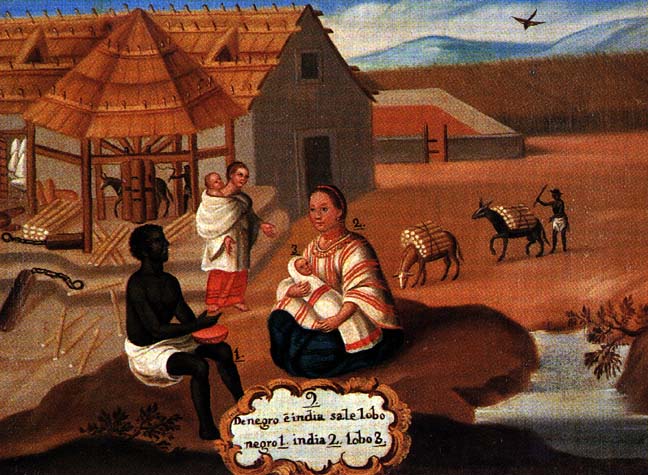


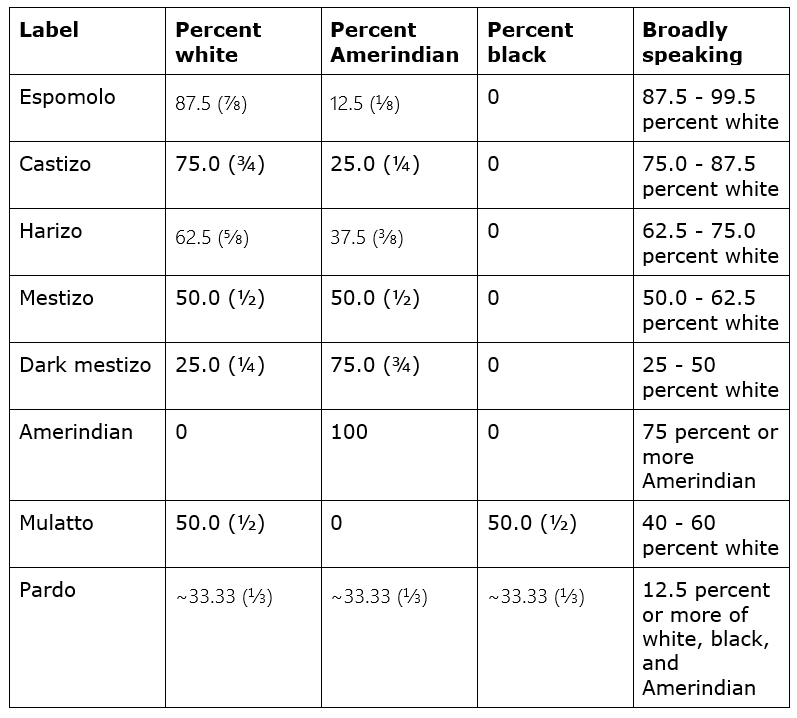
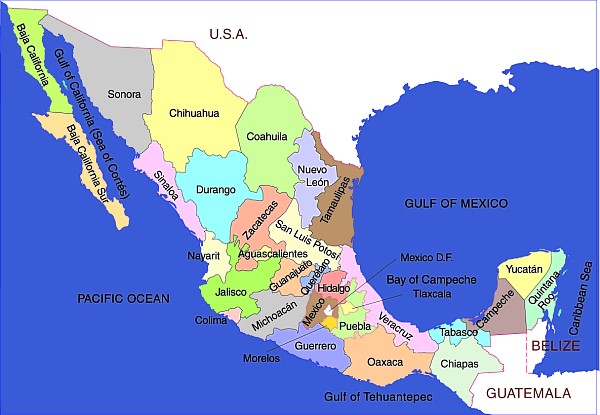
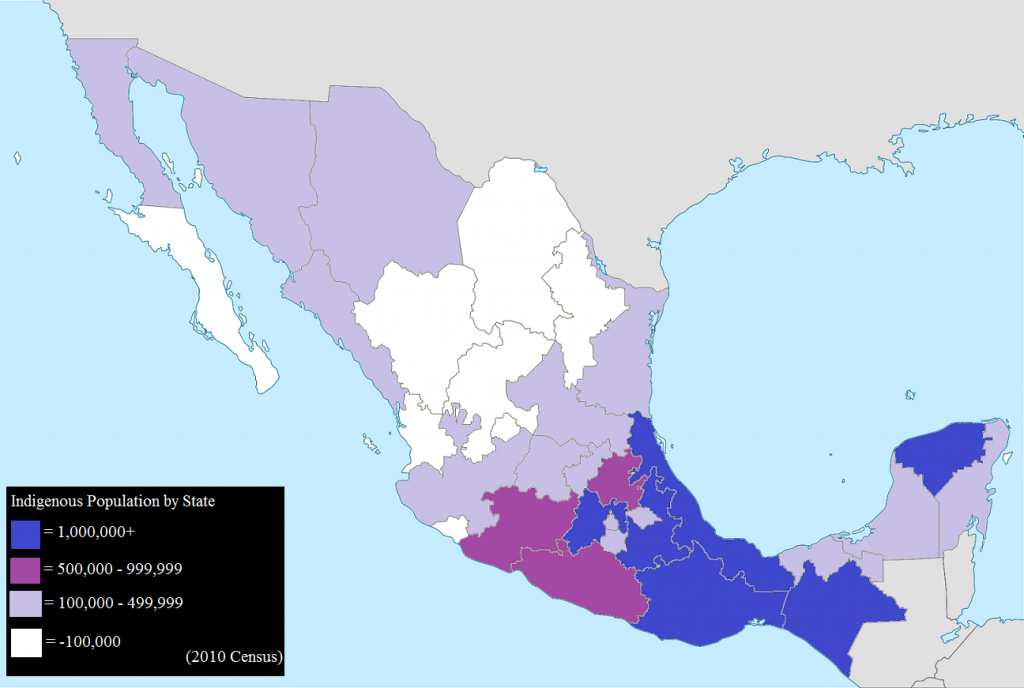

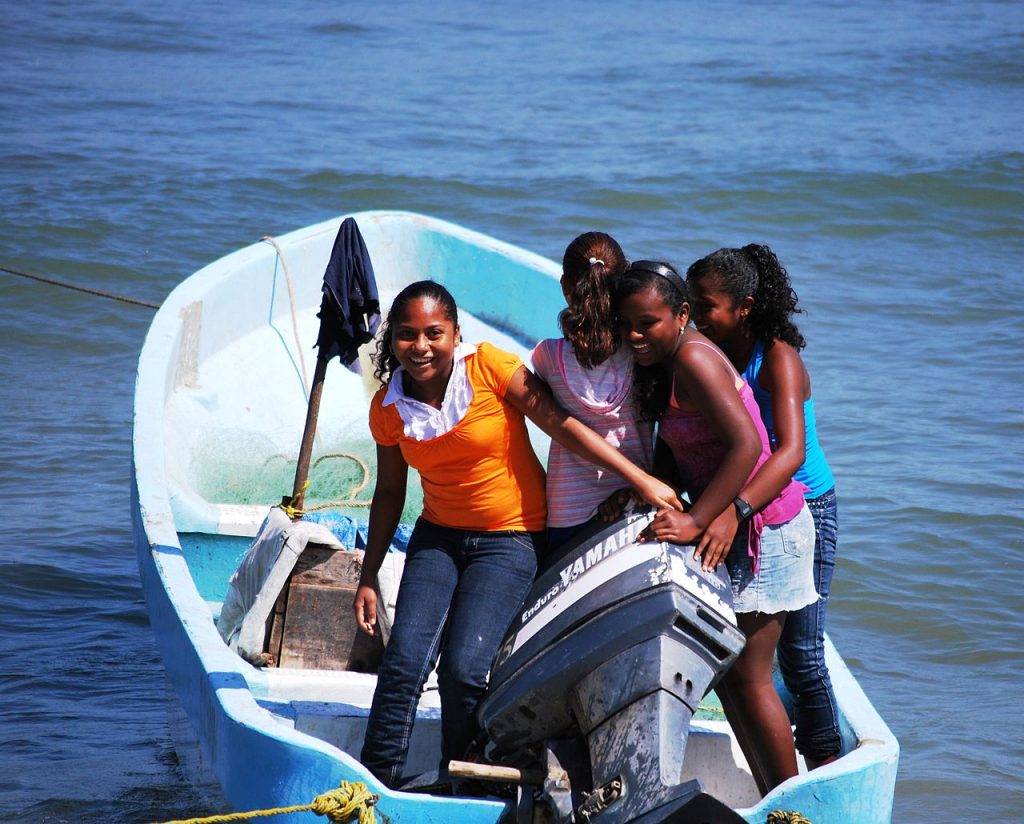















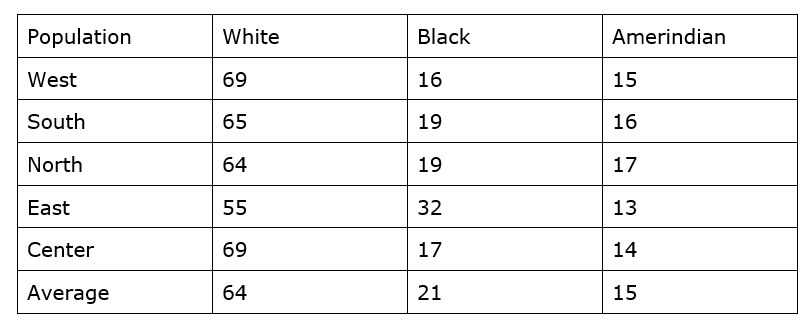







14 comments
Vice President Curtis was actually three-eights Indian: one part Kaw, one part Osage, and one part Potawotami.
I would question the author’s assumption that 40.1% of Mexican immigrants from states bordering the US being “likely half harizo” without looking into the class and racial makeup of emigrants. Sonora may hold a “white” majority but it may not be represented in its emigrant contingent; I’d be curious to find harizos and castizos are well in the minority of Mexican emigrants.
This is a fabulous article; timely and informative.
What it will look like is one issue. But what will happen to America is another. If nothing changes and we stay on this manufactured course America will become a broken,beaten version of its self. The problems of mexico and their southern neighbours will become ours but no one will be able to do anything. At this point government will change,constitution trashed. Then the vultures will come calling.
Interesting indeed. Also, those harnizos in the photos above need to start working out more, and dieting.
This might seem a little bit off topic but can you probably do an article on the perfidious “White slave propaganda” and how abolitionists used it to push their cause?
I think it´s relevant to an issue you adress in your article of how the subtle blurring of whiteness through mixed raced individuals can be used against us.
https://en.wikipedia.org/wiki/White_slave_propaganda
I read about the large white identification among Puerto Ricans shortly before your article and was baffled. At least in the New York Metropolitan Area, that wouldn’t be. The vast majority of PRs there (sorry if using an acronym is a bit racist–not), even the white ones, prefer the company of blacks and many even look up to them and imitate them and have for generations. Very few have any feelings at all for their supposed fellow whites, the Anglos.
Nice Article. But the following quotation makes no sense to me.
“Science Magazine, reporting on one study from 2014, observed that two Mexi
cans from different parts of the country are as genetically distinct as are Germans from Japanese.”
Germans are white; Japanese are of the Mongoloid race. They are two different races. How could it be that two tribes of Amerindians could be as distinct as two different races?
The oddity about genetic science applied to the study of ethnicity is in that it makes the most serious errors precisely there where its utility is of highest importance, that is to say, in making subtle differences become more clear and apparent. Nobody needs genetic science to find out that Japanese and Germans are different, but people need it to find out for example, how much have Circassians in Turkey, once a group of the same stock as Cossacks, become integrated with Turks. It fails miserably there since it depends on samples, and a sample of a “pure-blooded” Turk can contain a lot of unidentified Circassian ancestry, which will then display a relation even if a 100% pure Circassian is sampled on the other side.
Thank you for this outstandingly informative article. Excellent work. (Do writers like this get paid, or do all these great articles get produced gratis?)
My gut tells me that that 2045 racial tipping point is pushed out way too far. The Census is notorious for undercounting nonwhites. The US today is barely 60% White. Does this number include illegals? If not, then we may already be below 50% in terms of actual inhabitants.
Moreover, the 2045 projection extrapolates from existing trends (I do not know the precise methodology). What’s to prevent President Biden or Booker from throwing open legal immigration (and our borders) still more? The White race, at the very moment of its greatest weakness, has gone collectively insane. We White nationalists (along with a few paleos) are the last sane persons. Hardly any Republican is doing anything to stop immigration. Many of these “conservative” traitors want MORE.
I predict Census 2030 will reveal a non-white majority. By 2050, we will be down to a mere third of the country. By 2100, Whites will be 10% (in the unlikely case that the US has not fissured into ideologico-ethnostates).
We must ingather. I vote the upper Northwest, esp Idaho and Wyoming.
Dont forget the dakotas and montana. Maybe the other northern plains states?
I take ALL estimations of the genetic composition of Latin America with a grain of salt. I have spent the past few days looking at wikipedia pages about this topic, and you will find DNA analyses of racial composition of Latin American countries giving wildly different results. It seems that it is very difficult to get representative samples, given that there are so many people living deep in the forests, in third-world conditions, far away from University researchers.
From what I have heard, Nick Fuentes has one Mexican grandparent. Given that he is 80% white, this would imply that his Mexican grandparent is about 20% white. That is not a harnizo or a mestizo, that is a corrupted Amerindian.
From the pictures of Amerindians, judged against my own experiences with Mexicans in the USA, I’d say that the Amerindian component is quite high indeed. It is not bad to be Amerindian, it is actually quite awesome. I want their race to prosper and reclaim as much of the New World as possible, and for our race to return to our true homes in Europe.
Our reparations will be the bequeathing of the countries we have built in the New World. This seems fine to me.
To be honest, your definition of white is extremely loose. People that are 15% non-european can easily be identified. Moreover, even as 5% is noticeable I went to school with a fair bit of people that had non-white grandparents and you can easily spot them out. Moreover, the people you claim that are “white” from latin america clearly have non-white in them.
I’m not sure what the point of the article was… to try and persuade me to side with low trust “white” south americans? Or to show that mexicans will become a majority (pretty obvious)
Regardless, the conclusion I draw from this article is that south americans will become a majority and none of them are our friends or our equal’s in any shape or form especially due to the fact of the years and years of cultural assimilation and large amounts of non european dna (makingt them non european)
I hope I mistook the article as something else because if what I read was correct then you can count me out of all this “white nationalism” stuff. But wouldn’t be surprised since this site promotes john the rice field derby.
I know exactly what a Mexican America will look like…I already saw idiocracy. Thanks Mike judge!
Comments are closed.
If you have Paywall access,
simply login first to see your comment auto-approved.
Note on comments privacy & moderation
Your email is never published nor shared.
Comments are moderated. If you don't see your comment, please be patient. If approved, it will appear here soon. Do not post your comment a second time.
Paywall Access
Lost your password?Edit your comment